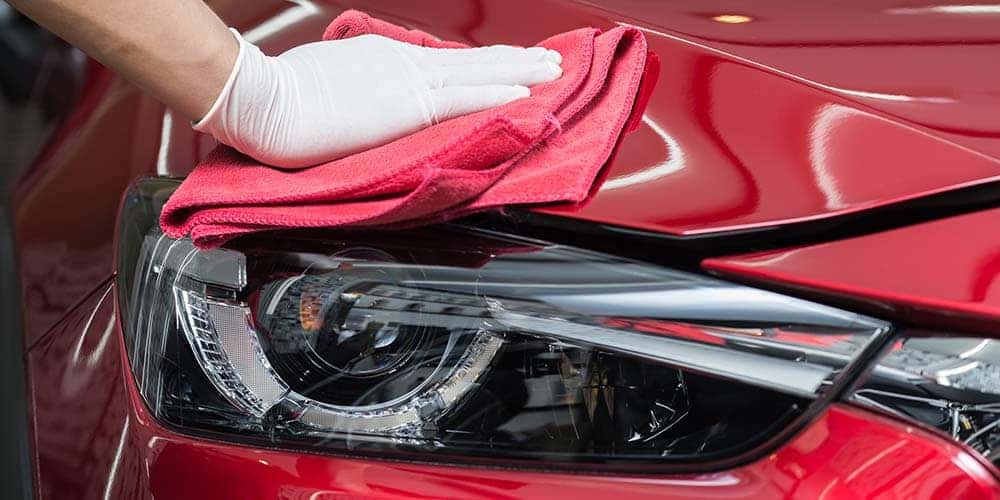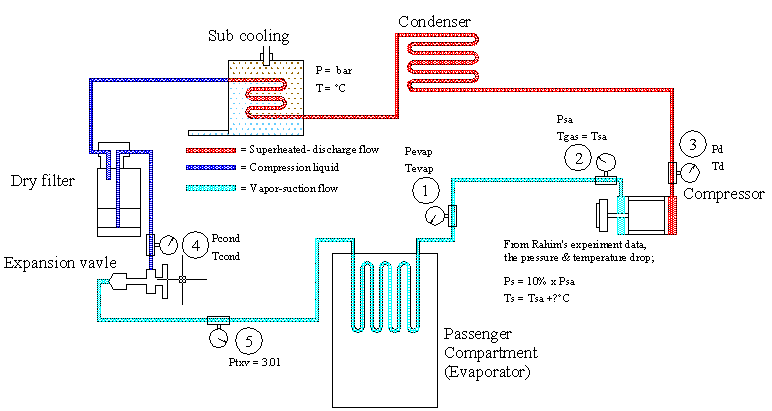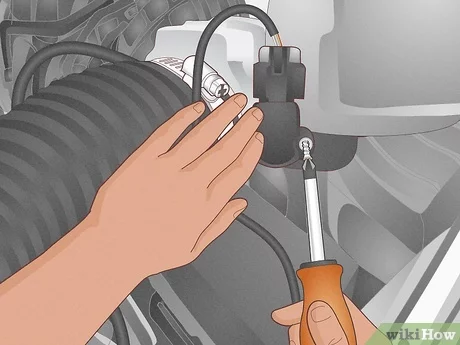Detailing a car usually takes between 2 to 8 hours. The time depends on the car’s condition and the detailing services chosen.
Car detailing is an essential service for maintaining your vehicle’s aesthetic and functional integrity. It involves a thorough cleaning, both inside and out, to remove dirt, grime, and other contaminants. Detailing can include washing, waxing, vacuuming, and polishing. Regular detailing helps preserve the car’s paint, interior materials, and overall appearance, increasing its lifespan and resale value.
Depending on the size of the vehicle and the complexity of the job, the time required can vary significantly. Always consider the specific services needed and consult with a professional to get an accurate estimate for your car.
Introduction To Car Detailing Timelines
Understanding how long it takes to detail a car is crucial. Car detailing is a thorough cleaning process. It involves both the interior and exterior of the car. Knowing the time required helps you plan better. Let’s explore the factors influencing detailing duration and manage your expectations.
Factors Influencing Detailing Duration
Several factors determine how long car detailing will take. Here are some key elements:
- Car Size: Larger cars take more time to detail.
- Condition: Dirtier cars require more extensive cleaning.
- Services Requested: Basic cleaning takes less time than a full detail.
- Detailing Experience: Experienced detailers work faster and more efficiently.
- Tools and Products: High-quality tools can speed up the process.
Expectations Vs. Reality In Detailing
Many people have unrealistic expectations about detailing time. They think it will be quick and easy. But thorough detailing is a meticulous process. It involves multiple steps and attention to detail.
Here’s a typical timeline for different detailing services:
| Detailing Service | Time Required |
|---|---|
| Basic Wash | 30-45 minutes |
| Interior Cleaning | 1-2 hours |
| Full Exterior Detail | 2-3 hours |
| Complete Detail (Interior and Exterior) | 4-8 hours |
Remember, these are estimates. Actual time can vary based on specific circumstances. Always discuss with your detailer to set realistic expectations.

Credit: www.midwaycdjr.com
Preparation Steps For Efficient Detailing
Detailing a car can be a rewarding experience. Proper preparation ensures efficiency and effectiveness. Following the right steps saves time and guarantees impressive results.
Gathering Essential Tools
Before starting, collect all necessary tools. This ensures a smooth detailing process. Here is a list of essential items:
- Microfiber Towels: For wiping and polishing.
- Car Shampoo: To clean the exterior without damaging the paint.
- Bucket and Grit Guard: To prevent dirt from scratching the surface.
- Detailing Brushes: For intricate areas and vents.
- Vacuum Cleaner: To clean the interior.
- Clay Bar: To remove contaminants from the paint.
- Polish and Wax: To enhance and protect the car’s finish.
- Glass Cleaner: For streak-free windows.
- Tire Cleaner and Dressing: To restore shine to the tires.
Creating A Detailing Checklist
Having a checklist ensures no step is overlooked. It helps maintain an organized workflow. Below is an example of a detailing checklist:
| Task | Description |
|---|---|
| 1. Wash Exterior | Use car shampoo and microfiber towels. |
| 2. Dry Exterior | Use clean microfiber towels to avoid water spots. |
| 3. Clay Bar Treatment | Remove embedded contaminants from the paint. |
| 4. Polish and Wax | Enhance the car’s shine and protect the paint. |
| 5. Clean Windows | Use glass cleaner for a streak-free finish. |
| 6. Vacuum Interior | Remove dirt and debris from carpets and seats. |
| 7. Clean Interior Surfaces | Use appropriate cleaners for dashboard, doors, and seats. |
| 8. Condition Leather | Apply leather conditioner to seats and trim. |
| 9. Dress Tires | Apply tire dressing for a polished look. |
Exterior Detailing Time-savers
Exterior detailing can be time-consuming. To save time, use specific techniques. These methods help you achieve a clean car quickly. Here are some time-saving tips for exterior detailing.
Techniques For Quick Washes
A quick wash saves time and energy. Use a waterless wash solution. Spray it on the car’s surface. Wipe it off with a microfiber cloth. This method works well for lightly dirty cars.
Another technique is the two-bucket method. Use one bucket for soapy water. Use the other bucket for rinsing your sponge. This reduces dirt transfer. It also prevents scratches.
Use a foam cannon for faster washing. Attach it to a pressure washer. It covers the car with foam quickly. Let it sit for a few minutes. Then, rinse off the foam with water. This technique loosens dirt and grime.
Speed Waxing Tips
Traditional waxing can be slow. Speed up the process with spray wax. Spray it on the car’s surface. Wipe it off with a clean cloth. This method is faster than paste wax.
Use a dual-action polisher for quick results. Apply a small amount of wax to the pad. Spread it evenly on the car’s surface. The polisher works faster than hand application. It also provides a better shine.
Choose a synthetic wax for longer-lasting protection. It requires less frequent application. This saves time in the long run. Synthetic wax is easy to apply and remove.

Credit: www.torquedetail.com
Interior Detailing Efficiency
Interior Detailing Efficiency is key to achieving a pristine car interior without wasting time. Whether you’re a professional or a DIY enthusiast, knowing how to efficiently detail your car’s interior can make a big difference. Let’s explore some techniques to speed up the process.
Streamlining Vacuuming And Dusting
Start with a powerful vacuum. Make sure to use attachments for tight spaces. Begin by removing loose items and trash. This makes vacuuming faster. Use a handheld vacuum for the dashboard and console. It saves time and reaches small areas easily.
Dusting should follow vacuuming. Use a microfiber cloth for best results. Spray a light mist of interior cleaner on the cloth. This helps in capturing dust better. Wipe surfaces in a single direction. It prevents dust from resettling.
Fast Fabric And Leather Treatment
Treating fabric and leather seats quickly is possible with the right products. Use a fabric cleaner for cloth seats. Spray it evenly and let it sit for a minute. Then, scrub with a soft brush. Wipe off any residue with a clean cloth.
For leather seats, use a leather conditioner. Apply it sparingly with a soft cloth. Rub it in using circular motions. This ensures even coverage. Let it absorb for a few minutes. Then, buff it with a dry cloth to restore shine.
| Task | Time (Minutes) |
|---|---|
| Vacuuming | 15 |
| Dusting | 10 |
| Fabric Treatment | 10 |
| Leather Treatment | 10 |
Efficient interior detailing saves time and improves results. Streamline your process by organizing tasks and using the right tools. Your car’s interior will thank you.
Engine Bay Cleaning Hacks
Cleaning the engine bay makes your car look new. It also helps find leaks and issues early. Here are some engine bay cleaning hacks to make the job easier and faster.
De-greasing Shortcuts
Grease and grime collect in the engine bay. Removing them can be tough. Here are some shortcuts:
- Use a spray-on degreaser: Spray it on dirty areas. Wait a few minutes, then wipe it off with a cloth.
- Brush and rinse: Use a small brush for tight spots. Rinse with low-pressure water to avoid damage.
- Steam cleaner: A steam cleaner melts grease without chemicals. This is safe and effective.
Quick Shine For Engine Components
After cleaning, make your engine bay shine. Use these tips:
- Protective spray: Spray a protective solution on plastic and rubber parts. This prevents cracking and fading.
- Microfiber cloth: Buff metal parts with a microfiber cloth. This gives a nice shine.
- Detailing brushes: Use small brushes to clean and shine hard-to-reach areas.
Follow these simple hacks to keep your engine bay clean and shiny. A clean engine bay not only looks good but also helps your car run better.
Credit: www.torquedetail.com
Wheel And Tire Detailing Shortcuts
Detailing a car can be time-consuming. Wheel and tire detailing often takes a lot of effort. This section will help you save time with some quick techniques. Learn rapid wheel cleaning techniques and tire shine application tricks.
Rapid Wheel Cleaning Techniques
Cleaning wheels quickly needs the right tools. Use a high-pressure hose to remove dirt. A soft bristle brush helps scrub off stubborn grime.
- Spray an all-purpose cleaner on the wheels.
- Scrub with a soft bristle brush.
- Rinse with a high-pressure hose.
Use microfiber towels for drying. They prevent scratches and leave a shine. Repeat these steps for each wheel.
Tire Shine Application Tricks
Shiny tires make a car look new. Apply tire shine quickly with these tricks.
- Use a foam applicator for even coating.
- Apply a thin layer of tire shine product.
- Let it sit for 5 minutes.
For extra shine, use a second coat. Avoid driving immediately to let the product set. This ensures the shine lasts longer.
Here’s a quick summary:
| Step | Tool/Technique |
|---|---|
| Cleaning Wheels | High-pressure hose, all-purpose cleaner, soft bristle brush |
| Drying Wheels | Microfiber towels |
| Applying Tire Shine | Foam applicator, thin layer, let it sit |
Post-detailing Steps For Lasting Results
Car detailing makes your car look new again. But the job doesn’t end there. Post-detailing steps are crucial for lasting results. Let’s explore some key actions.
Quick Quality Checks
After detailing, check the car’s appearance. Look for any missed spots or streaks. Ensure all surfaces are clean and shiny. Check the windows for clarity. Inspect the tires and rims for a polished look.
- Inspect all cleaned surfaces.
- Look for streaks or missed spots.
- Check windows and mirrors.
- Inspect tires and rims.
Effective Protective Measures
Protection keeps your car looking great for longer. Apply a high-quality wax or sealant. This adds a protective layer against dirt and UV rays. Use a tire dressing to maintain the shine. Always park in the shade to protect the paint.
| Protective Measure | Benefit |
|---|---|
| Wax/Sealant | Protects against dirt and UV rays |
| Tire Dressing | Keeps tires shiny and new |
| Shade Parking | Prevents paint fading |
Time Management Tips For Diy Detailers
Detailing your car yourself can be a rewarding experience. It can also save money. But how do you manage your time effectively? Below are some practical tips to help you detail your car efficiently.
Prioritizing Detailing Tasks
Start by making a list of all detailing tasks. Divide them into essential and non-essential categories. Focus on the essentials first. These include washing, waxing, and vacuuming. Use a checklist to stay on track:
- Wash the exterior
- Wax the car
- Vacuum the interior
- Clean the windows
- Detail the wheels
Set a timer for each task. This keeps you focused. Move on to the next task as soon as the timer goes off.
Avoiding Common Time-wasting Pitfalls
Many DIY detailers waste time on unnecessary steps. Avoid these common pitfalls:
- Using too many products: Stick to a few high-quality items.
- Over-cleaning: Don’t aim for perfection; aim for clean.
- Skipping steps: Follow your checklist to avoid going back.
Preparation is key. Gather all your tools before you start. Keep them within reach. This reduces the time spent looking for items.
By following these time management tips, your car detailing process will be faster and more efficient.
Frequently Asked Questions
What Is The Average Time To Detail A Car?
The average time to detail a car is 2 to 5 hours. It depends on the car’s size and condition.
Is Detailing Worth The Money?
Yes, detailing is worth the money. It enhances your car’s appearance, protects its value, and provides a cleaner environment.
How Long Should A Detail Last?
A car detail typically lasts between 4 to 6 months. Duration depends on driving conditions and maintenance routines. Regular upkeep extends the lifespan.
How Much Do You Tip A Car Detailer?
Tip a car detailer 15-20% of the total cost. For exceptional service, consider tipping more.
How Long Does Car Detailing Take?
Car detailing typically takes 2 to 6 hours, depending on the car’s condition and the level of detail required.
What Factors Affect Car Detailing Time?
Factors include car size, condition, detailing package chosen, and the detailer’s experience.
Is Professional Detailing Faster Than Diy?
Yes, professional detailing is usually faster due to specialized tools and expertise.
Can Detailing Time Vary By Car Type?
Yes, larger cars like SUVs take longer than smaller cars.
Conclusion
Detailing a car can vary greatly in time. Factors like car size and detail type influence this. On average, expect anywhere from a couple of hours to a full day. Regular detailing keeps your car in top condition. Always choose professional services for the best results.
Invest in your car’s appearance and longevity.



